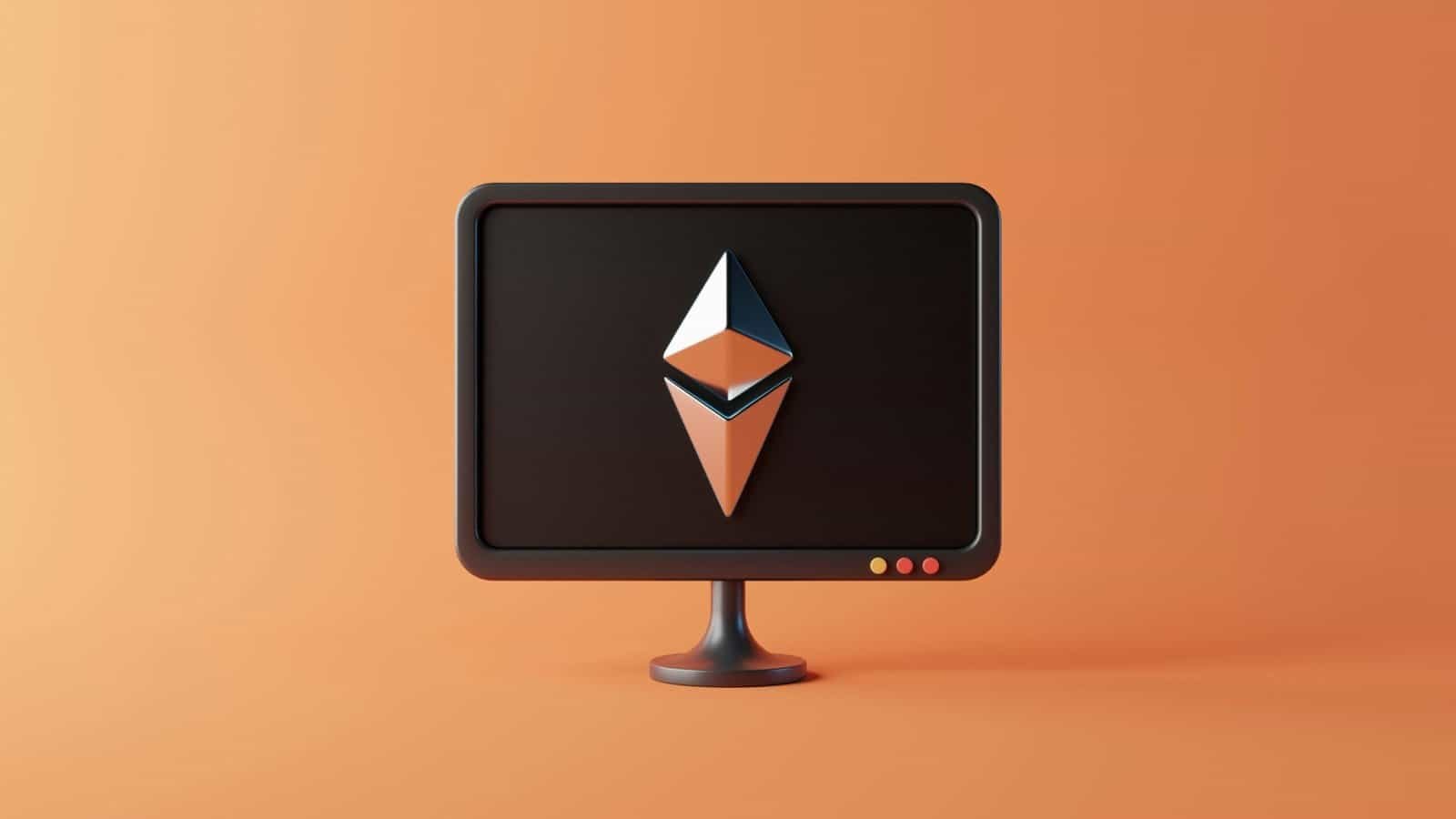?Curious what new blockchain technologies are emerging in 2025 and how they might change the way you build, transact, and interact with decentralized systems?

What New Blockchain Technologies Are Emerging In 2025?
This year brings a mix of evolutionary upgrades and genuinely novel architectural shifts. You’ll find improvements that address scalability, privacy, cross-chain communication, developer experience, and real-world asset tokenization. Below you’ll get a clear, practical guide to the technologies to watch, how they differ, and what they mean for your projects or usage.
Quick overview: why 2025 feels different
You’ll notice a shift from single-problem solutions to composable, production-ready ecosystems. The focus has moved from raw on-chain throughput to modularity, privacy-by-design, verifiable off-chain computation, and better user-facing wallet and identity experiences. These changes are lowering technical friction for real-world adoption.
Major trends shaping new blockchain technologies
These trends frame the technical advances you’ll see across networks and tooling. Each trend influences multiple layers — from consensus to user wallets.
- Scalability via ZK-rollups, modular execution, and improved data availability
- Privacy by design with general-purpose zero-knowledge (ZK) tooling
- Real interoperability using light-client proofs and standardized messaging
- Better UX through account abstraction and token-bound accounts
- On-chain governance, compliance, and identity primitives that are more practical for institutions
- Verifiable off-chain compute to enable complex, private, and cheap computation
These trends will influence both the protocols you choose and the architecture of applications you build.
Scalability: the new generation of rollups and modular stacks
Scalability remains central, but the approaches are more nuanced. You’re moving from “more transactions per second” to “better economics, data availability, and composability.”
ZK-rollups mature and proliferate
ZK-rollups continue to be a dominant scaling path in 2025. Advances in zkEVMs and general-purpose ZK proving systems make it easier for you to migrate existing smart contracts. Throughput improves, and proof generation becomes cheaper and faster through incremental and recursive proof systems.
You’ll see zkEVM-compatible rollups that support Ethereum-like semantics so you don’t have to rewrite entire codebases. The UX for deploying and interacting with contracts becomes easier over time.
Optimistic rollups get faster and cheaper
Optimistic rollups aren’t obsolete; they’ve improved fraud proof efficiency, shortened challenge periods with better economic incentives, and increasingly integrate fraud-proof compression and parallel dispute resolution.
If you care about low transaction costs and compatibility with existing tooling, optimistic rollups still offer a viable trade-off.
Hybrid rollups and modular stacking
Expect hybrid designs that let you choose between optimistic and ZK modes for different parts of your application. Modular stacks decouple execution, settlement, and data availability. This allows you to pick a specialized layer for each need — execution for complex logic, ZK for privacy, and a separate DA layer for availability.
This modularity reduces single-chain monolithic risks and lets you compose best-of-breed services.
Table: Comparing L2 approaches
| Feature / Metric | ZK-rollups | Optimistic Rollups | Hybrid / Modular |
|---|---|---|---|
| Finality speed | Fast (after proof) | Slower (challenge period) | Configurable |
| Compatibility with existing EVM code | Increasingly high (zkEVM) | High | High |
| Proof generation cost | Decreasing (improving tooling) | Lower immediate cost | Varies |
| Security model | Cryptographic proofs | Economic fraud proofs | Mixed |
| Best for | Privacy, efficiency, secure settlement | Legacy compatibility, cost-sensitive apps | Customizable stacks |
Data availability and modular blockchains
One of the most visible shifts in 2025 is separating data availability from execution. You’ll benefit from networks that let many rollups rely on a common DA layer without competing for block space.
Data availability layers and DA sampling
Dedicated DA layers let you post large batches of transaction data while using light client sampling to ensure availability. This lowers costs for rollups and increases the security of multi-rollup ecosystems. You’ll notice projects offering DA-as-a-service to reduce deployment friction.
Modular blockchains vs monolithic chains
Modular chains separate roles: execution, settlement, and data availability each have specialized networks. If you run an application, you can choose a fast execution environment paired with a secure DA layer and a settlement chain for dispute resolution. This reduces inefficiencies found in single-layer designs.
Emerging DA solutions: Celestia and alternatives
In 2025 you’ll see production deployments of DA-first networks and competitive alternatives that optimize latency, throughput, or decentralization. Innovations include batch proofs, erasure coding improvements, and DA sampling that scales with node resources.
Table: Data Availability options at a glance
| Option | Typical use case | Pros | Cons |
|---|---|---|---|
| Integrated DA (monolithic) | Simplicity, single-chain dApps | Simpler UX | Competing resource demands |
| Dedicated DA chains | Multi-rollup ecosystems | Cheaper rollup data, scalable | Requires integration |
| Layered DA (cloud + DA proofs) | Low-cost DA for small teams | Lower upfront cost | New trust models |

Privacy and zero-knowledge beyond basic proofs
Privacy technologies have matured into developer-friendly tooling. You’ll find ZK primitives integrated across stacks, enabling confidentiality and compliance simultaneously.
General-purpose ZK and zkVMs
zkVMs let you write general programs that can produce succinct, verifiable proofs of execution. This means you can run complex logic off-chain and post a proof on-chain. You’ll find languages and toolchains that compile higher-level code to ZK circuits with more predictability.
This unlocks private DeFi primitives, confidential auctions, and privacy-preserving identity verification.
Recursive proofs and prover performance
Recursive SNARKs let you aggregate many proofs into smaller proofs. This reduces on-chain verification cost and speeds finality for batched transactions. You’ll see rollups leveraging recursion to scale proof verification to thousands of transactions per proof.
Better prover performance and optimized hardware/parallelization make recurring proof generation practical for many use cases.
Privacy-preserving cross-chain transfers
Cross-chain transfers that maintain privacy are now feasible using ZK-based relays and private messaging protocols. You’ll be able to move assets across chains without revealing full transactional graphs, while still proving state transitions.
Interoperability and cross-chain messaging
Cross-chain interoperability moved from experimental bridge hacks to standardized messaging and security models. That means safer and more composable cross-chain applications for you.
Light-client proofs and zk light clients
Light clients based on zk proofs make cross-chain state verification cheaper and more secure. Instead of trusting a centralized relayer, you can verify succinct proofs of remote chain state in a trust-minimized way.
This allows you to build cross-chain composability with fewer trusted third parties.
Cross-chain messaging standards and CM protocols
Standardized cross-chain messaging frameworks (often called CXM or CMC-like standards) enable uniform message formats, gas accounting, and dispute mechanisms. With these standards, you’ll see composable cross-chain DeFi and multi-chain DAOs with consistent developer interfaces.
Safer bridges and state proofs
The next generation of bridges uses light clients, fraud/evidence proofs, or cryptographic proofs instead of private key-controlled relayers. You can expect more bridges with insurance bonds, economic slashing, or proof-based security guarantees.

Wallets, identity, and account abstraction
A major usability improvement this year will be wallet models that feel like web accounts. You’ll interact more naturally with Web3 services.
Account abstraction (ERC-4337 and beyond)
Account abstraction turns wallets into smart contract accounts with programmable logic: social recovery, gas sponsorship, multi-key authorization, automated batching, and more. You can craft user experiences similar to web services without giving up on-chain control.
This reduces friction for onboarding and offers more flexible security models for your users.
Token-bound accounts and composable identities
Token-bound accounts (like ERC-6551) attach account-like behavior to NFTs, enabling NFT-native smart accounts and richer ownership models. You can make an NFT that owns assets, interacts with contracts, or enforces metadata-driven rules.
This helps creators and collectors build new monetization and access control models.
Decentralized identity (DID) and privacy-respecting credentials
DID methods and verifiable credentials give you selective disclosure and offline verification while preserving privacy. Combining these with ZK proofs lets you prove eligibility without revealing sensitive details, which is crucial for compliant onboarding and regulated financial flows.
Oracles, off-chain compute, and verifiable computation
Oracles evolved from simple price feeds to verifiable compute systems that let you run complex off-chain tasks with on-chain assurance.
Next-gen oracles and private data feeds
Oracles now deliver not just price data but also verified machine-learning outputs, private off-chain data, and attestations from secure enclaves. You’ll find oracle networks offering threshold attestations, multi-source aggregation, and decentralized attestation for improved reliability.
Verifiable compute and rollup-native computation
Verifiable compute frameworks let you run heavy computation off-chain and post succinct proofs on-chain. This opens up on-chain gaming, privacy-preserving analytics, complex financial simulations, and more without astronomical gas costs.
Rollups increasingly integrate verifiable compute layers so your dApp can call an off-chain function, receive a proof, and proceed trustlessly.
Trusted Execution Environments (TEEs) and MPC improvements
TEEs continue to be used where appropriate, but multi-party computation (MPC) and threshold cryptography provide stronger decentralization guarantees for critical computations. You’ll find hybrid models where TEEs bootstrap trust while MPC provides ongoing decentralized security.

Consensus, security, and quantum readiness
Consensus algorithms and security models continue to evolve to balance speed, decentralization, and resistance to emergent threats.
Consensus refinements and proposer separation
Proposer-builder separation (PBS) and fair sequencing services are becoming standard to mitigate MEV extraction and centralization pressure. These mechanisms let you separate block building from block proposing, creating competitive builder markets and optional sequencing auctions with verified fairness properties.
Consensus layers are also tuning finality times and supporting parallelization for faster confirmation while keeping validators decentralized.
Fraud proofs, availability sampling, and exit fast lanes
Fraud proof improvements shorten withdrawal times from optimistic L2s by enabling faster dispute resolution. Availability sampling lets light nodes verify DA efficiently, increasing security for small validators or resource-constrained environments.
This improves your ability to exit quickly and safely from rollups with fewer trust assumptions.
Post-quantum cryptography and future-proofing
Some protocols are preparing for quantum threats by offering post-quantum signature alternatives or hybrid schemes that can be upgraded on-chain. You’ll see optional post-quantum primitives in wallets and layer-0 protocols to future-proof sensitive assets.
NFTs, tokenization, and real-world assets
Tokenization matured from hype to production use cases. You can now build asset-backed tokens with standardized custody, audits, and compliance controls.
Composable NFTs and programmable ownership
NFTs are increasingly composable: they can own tokens, call contracts, and encapsulate identity features. This turns collectibles into on-chain agents and unlocks new revenue and licensing models where ownership triggers rights, royalties, or access automatically.
Tokenization of real-world assets (RWA)
Standard tooling for tokenizing real estate, bonds, and commodities has reduced legal and operational friction. KYC/AML-friendly token standards and on-chain compliance primitives make it easier for institutions to issue and trade RWAs on-chain.
You’ll find custodial and non-custodial custody models with clear legal frameworks, enabling regulated participants to engage more confidently.
DeFi upgrades: MEV mitigation and composability
MEV mitigation protocols are now common in DEXs and lending markets, using fair sequencing, encrypted mempools, and auction mechanisms to reduce frontrunning. You’ll see more permissioned and permissionless markets that incorporate MEV-aware designs to protect users.

Governance, regulation, and compliance primitives
On-chain governance tools have improved to support real organizations with regulatory obligations.
Practical governance modules
Governance tools now support timelocks, multi-sig frameworks, treasuries, parametric voting, and delegated models that scale to thousands of participants. These upgrade the way DAOs run budgets and manage upgrades in a safer, more auditable way.
Compliance-by-design features
Selective disclosure, auditable proof-of-compliance, and on-chain attestations let you comply with regulations while preserving user privacy. This helps institutions and regulated markets participate with lower legal friction.
Developer tooling, languages, and testability
Developer experience has improved dramatically, making it easier to build complex, secure systems.
ZK-first languages and compilers
Languages like Noir, Circom, and improvements to classic languages now make ZK circuit development more accessible. You can write higher-level code and rely on compilers to generate efficient circuits.
This reduces the barrier to entry for privacy-preserving dApps and accelerates security audits.
Move, Sui, and parallel execution platforms
New execution models — like those emphasizing parallel execution and resource accounting — let you build high-performance dApps. Move-inspired languages prioritize safety, and Sui-style object models enable new composition patterns for complex stateful apps.
Testing, simulation, and verification tools
Toolchains for formal verification, property-based testing, and end-to-end simulation have matured. You can simulate cross-chain flows, run fast zk-prover tests locally, and verify governance upgrade paths before deployment.
Practical implications: what you should consider
With all these changes, you’ll want to adapt your strategy whether you’re a builder, integrator, or user.
If you’re a developer
- Prefer modular stacks where you can pick best-fit components: execution, DA, and settlement.
- Experiment with zkEVMs for privacy or performance-critical flows, but keep fallback paths for compatibility.
- Use account abstraction to improve UX and retention for end users.
- Integrate standardized cross-chain messaging rather than ad-hoc bridges to reduce risk.
If you’re a product manager or operator
- Evaluate DA costs and finality latency when choosing L2s — economics matter for product margins.
- Leverage verifiable compute to offload heavy logic without compromising security.
- Consider privacy-preserving identity solutions to reduce KYC friction while maintaining compliance.
If you’re a user or investor
- Look for projects using proven DA and proof models rather than experimental bridges.
- Prioritize wallets offering account abstraction and social recovery to improve security.
- Be cautious with emerging assets but consider tokenized real-world assets that have robust legal frameworks.
Risks and trade-offs to keep in mind
No technology is risk-free. You’ll need to weigh trade-offs across security, decentralization, cost, and UX.
- New primitives may have smaller audit histories. Favor projects with strong audits and bug bounties.
- Modular stacks introduce cross-layer dependencies. Understand how settlement and DA interact.
- Recursive and ZK systems add complexity to prover infrastructure. Factor in operational overhead and tooling maturity.
- Privacy features must balance regulatory compliance. Consider selective disclosure and revocable credentials.
How to stay current and evaluate technologies
To keep pace, you should follow a mix of protocol upgrades, tooling announcements, and community governance. Engage in testnets, read security audits, and try developer previews before committing to production.
- Monitor testnets and release notes of major rollup and DA projects.
- Try building a prototype on a zkEVM and measure prover times and costs.
- Join governance discussions to understand upgrade paths and risk models.
Final thoughts
In 2025 you can expect blockchain tech to be more modular, privacy-aware, and production-ready. The landscape now supports realistic enterprise use cases and better consumer UX. By selecting composable stacks — pairing a strong data availability layer, a compatible execution environment, and verifiable off-chain compute — you can build solutions that are scalable, private, and legally viable.
If you want, I can help you:
- Compare specific rollups or DA providers for your use case,
- Draft a migration strategy from a monolithic chain to a modular stack,
- Review a tech stack for ZK integration and prover cost estimates.
Tell me which use case matters most to you and I’ll tailor a recommended path forward.
